Create a data frame from your data:
df <- data.frame(Gene_name = c("E_2401_ctrl_1", "E_2401_ctrl_2", "E_2401_ctrl_3", "E_2401_drt_1", "E_2401_drt_2"),
LOC_Os01g01312 = c(1.601736731, 0.310548148, 1.238589942, -0.899941148, -0.980640435),
LOC_Os01g01360 = c(-0.850254449, -0.420792594, 0.083358279, 0.86759297, 0.102030534),
LOC_Os01g01390 = c(0.40382069 , -0.377555928, -0.009849284, -0.285629267, 0.219967368),
LOC_Os01g01610 = c(-1.102507436, -0.90329537, -0.458899223, 1.042853272, 0.904937227),
LOC_Os01g01620 = c(-0.806239145, -1.190898502, -0.229250108, 0.812535653, 1.004865332))
library(ggplot2)
library(reshape2)
for ggplot reshaping to long format is a good idea
df_melt <- reshape2::melt(df, id.vars = "Gene_name")
check how the data looks now
head(df_melt, 10)
gene names are in one column and the corresponding z-scores are in another
ggplot(data = df_melt)+
geom_line(aes(x = variable, y = value, group = Gene_name))+
theme(axis.text.x = element_text(angle = 45, hjust = 1))+
xlab("gene")+
ylab("")
how this reads:
ggplot(data = df_melt)
specifies the data from which to draw the plot
geom_line(aes(x = variable, y = value, group = Gene_name))
geom_line since you want lines connecting the values. In ggplot all the variables go inside aes().
theme(axis.text.x = element_text(angle = 45, hjust = 1))+
xlab("")+
ylab("z-score")
the rest is just makeup
if you would like faceted plots, add a variable by which you will facet
df_melt <- data.frame(rbind(df_melt, df_melt),
letters=rep(c("A", "B"), each = nrow(df_melt)))
here I just repeat the data frames two times,
rbind(df_melt, df_melt)
and label rows from first one with "A" and second one with "B".
letters=rep(c("A", "B"), each = nrow(df_melt))
df_melt
now you can facet by the "letters" variable
ggplot(data = df_melt)+
geom_line(aes(x = variable, y = value, group = Gene_name))+
theme(axis.text.x = element_text(angle = 45, hjust = 1))+
xlab("gene")+
ylab("z-score")+
facet_wrap(~letters, ncol = 1)
EDIT: cluster labels can be colored by adding the color = variable argument to the aes() call inside the geom you want colored. I will start from the begining:
df <- data.frame(Gene_name = c("E_2401_ctrl_1", "E_2401_ctrl_2", "E_2401_ctrl_3", "E_2401_drt_1", "E_2401_drt_2"),
LOC_Os01g01312 = c(1.601736731, 0.310548148, 1.238589942, -0.899941148, -0.980640435),
LOC_Os01g01360 = c(-0.850254449, -0.420792594, 0.083358279, 0.86759297, 0.102030534),
LOC_Os01g01390 = c(0.40382069 , -0.377555928, -0.009849284, -0.285629267, 0.219967368),
LOC_Os01g01610 = c(-1.102507436, -0.90329537, -0.458899223, 1.042853272, 0.904937227),
LOC_Os01g01620 = c(-0.806239145, -1.190898502, -0.229250108, 0.812535653, 1.004865332))
df_melt <- reshape2::melt(df, id.vars = "Gene_name")
#the ifelse() part makes another column called "lett" where if it is a "crtl" gene will be "A" and "B" if not
df_melt <- data.frame(rbind(df_melt, df_melt),
lett = ifelse(grepl("ctrl", df_melt$Gene_name), "A", "B"))
ggplot(data = df_melt)+
geom_line(aes(x = variable, y = value,group = Gene_name, color=lett))+
theme(axis.text.x = element_text(angle = 45, hjust = 1))+
xlab("gene")+
ylab("z-score")+
scale_color_manual(values=c("A" = "red", "B" = "blue"))
more on controlling the colors:
http://ggplot2.tidyverse.org/reference/scale_manual.html
http://ggplot2.tidyverse.org/reference/scale_brewer.html
